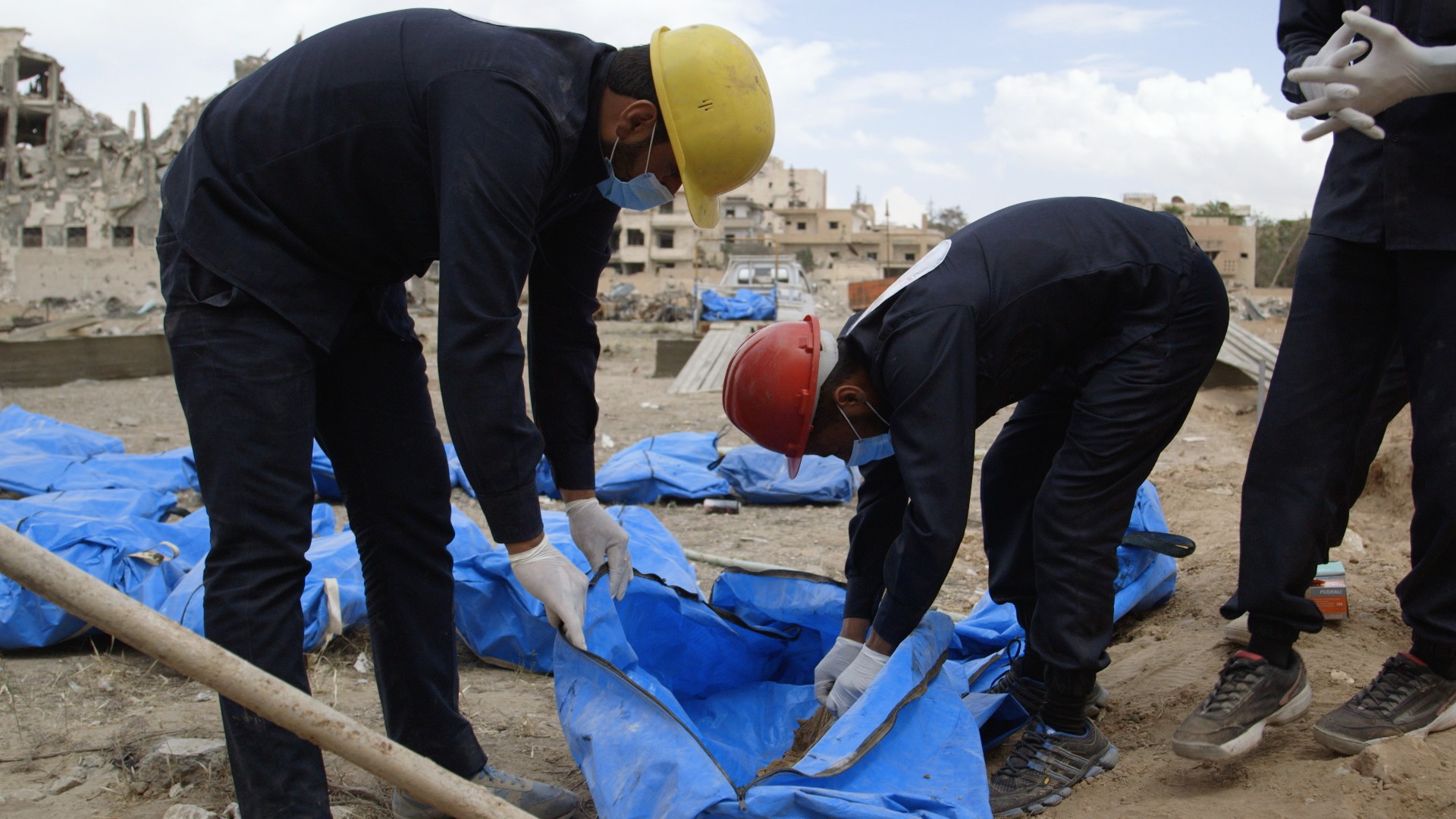In 2017, the U.S. military and its allies nearly destroyed Raqqa in their bid to free the Syrian city from ISIS’ grip. It was hailed as major turning point in the wider war against the terror group.Now there's new data showing just how much civilian death the destruction wrought.On Thursday, Amnesty International, along with the monitoring group Airwars, released an interactive report that finds the U.S.-led coalition responsible for the deaths of more than 1,600 civilians over the course of the four-month battle for Raqqa from June to October 2017. That figure stands in stark contrast to the coalition’s own reporting, which accepts responsibility for only 180 civilians during that period.The watchdogs say they were able to directly verify 641 of those deaths on the ground in Raqqa, noting there were “very strong, multiple source reports for the rest.” The groups have also identified names for at least 1,000 of the victims.The report is based on two years of on-the-ground investigations in the once-self-proclaimed capital of the Islamic State group, an analysis of over 2 million satellite image frames, and authenticated video footage captured during the battle. It paints a damning picture of a U.S.-led operation that appeared at times to prioritize speed and force over all else in its aim to recapture the northern Syria city from ISIS.“Many of the air bombardments were inaccurate and tens of thousands of artillery strikes were indiscriminate, so it is no surprise they killed and injured many hundreds of civilians,” said Donatella Rovera, senior crisis response adviser at Amnesty International.U.S. military officials haven’t been shy about the level of lethal force they inflicted on Raqqa, though the coalition insists it took “reasonable” measures to minimize civilian deaths. One official even noted the extraordinary number of artillery rounds fired by a single Marine artillery battalion during the campaign.“They fired more rounds in five months in Raqqa, Syria, than any other Marine artillery battalion, or any Marine or Army battalion, since the Vietnam War,” said Army Sgt. Major. John Wayne Troxell during a media event in January 2018.Artillery strikes were hardly the exception. Thousands of U.S., U.K. and French airstrikes were dropped on the city during the battle. ISIS, meanwhile, used civilians as human shields, and turned the city into a “death trap,” by closing exit routes and littering it with snipers, landmines and booby traps.But the destruction of Raqqa is hard to square with such promises. Some 80 percent of the city’s infrastructure was destroyed in the battle against ISIS. That figure is laid bare by the estimated 11,000 damaged or destroyed buildings, many of which still litter the city two years on.“The percentage of destruction in Raqqa is really quite unlike anywhere else,” said Amnesty’s Rovera, a field analyst with two decades of experience. “We’ve seen half of Aleppo destroyed, we’ve seen the old city of Mosul destroyed, but in Raqqa it’s every single neighborhood. The scale is massive.”Now, as Raqqa’s residents struggle to rebuild their homes and account for their dead, Amnesty and Airwars are urging the U.S and its allies to break their “almost two years of denial about the massive civilian death toll and destruction it unleashed” on the city and conduct meaningful investigations of their own.The coalition has faced repeated criticism for its perceived lack of interest in post-strike reviews, and is regularly accused of not even speaking with witnesses and victims on the ground. Increasingly, groups like Amnesty say the responsibility has fallen to them to pick up the pieces.“We’ve been doing their job, the job they should’ve been doing,” Rovera told VICE News.Col. Scott Rawlinson, a spokesperson for CJTF-OIR, told VICE News the coalition has a full-time staff dedicated to investigating allegations of civilian casualties, and said they are “willing to work with anyone making allegations or providing new, credible information.” He said some allegations were still under investigation.But Rovera said much more is necessary for the coalition to fully come to terms with what happened in Raqqa. She said Amnesty and Airwars’ latest findings make an overwhelming case that the U.S. must take a far more proactive role in understanding the true costs of its operations there.Chris Woods, director of Airwars, in a statement urged the coalition to learn from Raqqa: “The coalition needs to fully investigate what went wrong at Raqqa and learn from those lessons, to prevent inflicting such tremendous suffering on civilians caught in future military operations.” Cover: In this Thursday, Oct. 19, 2017, file photo, an image made from drone video shows damaged buildings in Raqqa, Syria. (AP Photo/Gabriel Chaim)
Cover: In this Thursday, Oct. 19, 2017, file photo, an image made from drone video shows damaged buildings in Raqqa, Syria. (AP Photo/Gabriel Chaim)
Advertisement
Advertisement
Still, the watchdogs said such dynamics were all the more reason for the U.S.-led coalition to take greater precautions to avoid civilian casualties, especially since they knew thousands of civilians remained trapped inside the city as fighting intensified. The U.N. warned that as many as 25,000 civilians remained trapped in the city as the battle raged on.“There is no doubt that ISIS has an enormous share of responsibility,” said Rovera. “But that does not take away the coalition’s responsibility to do what it can to protect civilians.”“Did the coalition do all it could’ve and should’ve done," Rovera added. "The answer is plainly no.” Rovera pointed to the number of strikes and the speed with which they were launched as indicative of the coalition's dangerously aggressive stance in Raqqa.“The percentage of destruction in Raqqa is really quite unlike anywhere else.”
The Combined Joint Task Force-Operation Inherent Resolve (CJTF-OIR), which oversaw the operation in Raqqa, rejected Amnesty’s findings, and in a comment to VICE News insisted they “conduct precision strikes after in-depth monitoring” and take “all reasonable measures to minimize civilian casualties.”“Did the coalition do all it could’ve and should’ve done? The answer is plainly no.”
Advertisement
